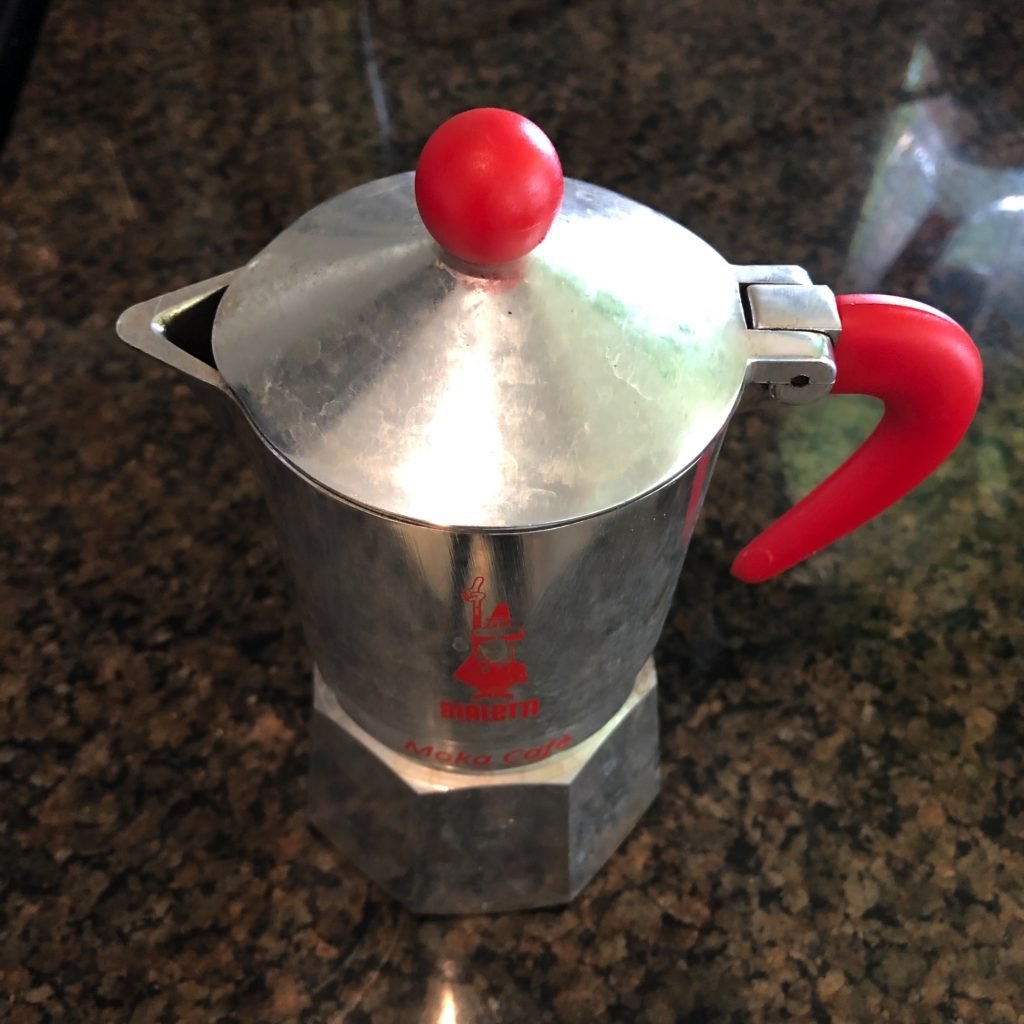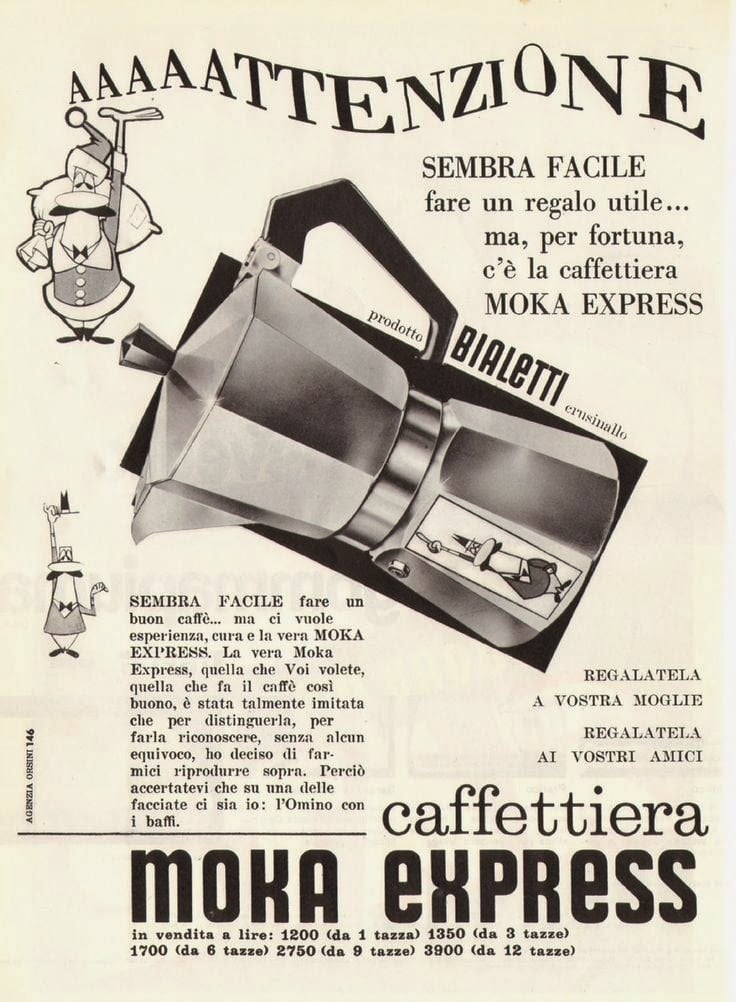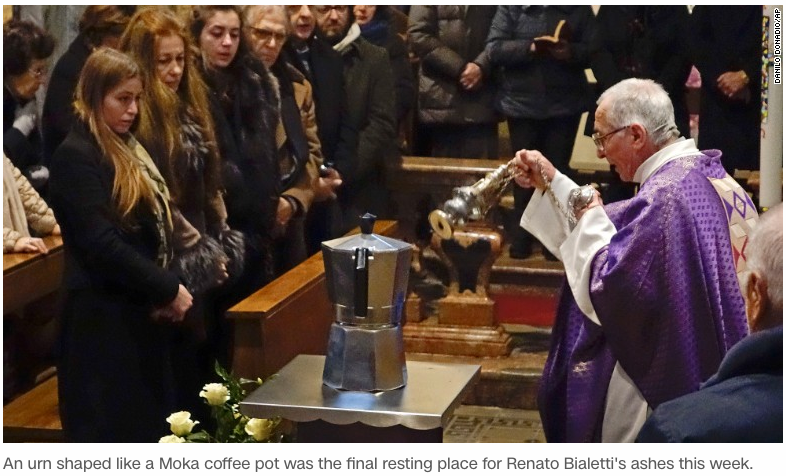
Last August Caroline and I ventured to Ravello, Italy, for her nephew’s wedding. We had booked a reasonably priced apartment via Airbnb with the critical feature of a panoramic view of the Mediterranean. Upon arriving and surveying the scene, we were flummoxed by the presence of a Moka pot as the sole coffee-making device. We love our coffee (and I was a happy Aeropress snob for a while), but the Moka was new to us. Our morning brew was mandatory (especially with jet lag) and this Moka thing didn’t seem like it would deliver the goods. We weren’t even sure how to work it.
I know what my European readers are thinking: so typically American of us.
But there’s a fairy tale ending. After a few days trapped to the Moka, we fell in love with it. The look of it, the ritual, the sound it makes as it’s brewing, the anticipation. And the final product — delicious, thick espresso. Upon our return home, we immediately located and purchased our own Moka pot and now have the daily ritual of an early-afternoon espresso pick-me-up. The bonus is we’re reminded of our fantastic time in Ravello every time we rev it up.

It’s with interest and delight that I happened across this Atlas Obscura article on the history of the Moka pot. ‘Humble Brilliance’ indeed. Did you know its design is featured in the Museum of Modern Art and the Cooper-Hewitt Smithsonian Design Museum? I think it’s fascinating that design and function were combined in a popular product so early in the 20th century. Take that, Apple.
There are many other great tidbits in the piece, such as:
Alfonso Bialetti’s son, Renato, came back to Piedmont in 1946 to take over his father’s shop and decided to stop making everything except one product: the Moka Express. The newly low price of aluminum and coffee, and a growing middle class of people who could buy products like this, made the Moka pot a perfect device for the time. Renato was also a pretty shrewd businessman; in 1953, he commissioned the drawing of the company’s logo, L’omino con i baffi, “the little man with the mustache,” which has since been inseparable from the Moka Express. The Moka Express was “the first way that Italians could realistically make coffee at home that was some approximation of what they could get outside,” says {Specialty Coffee Association’s Peter} Giuliano.
Renato Bialetti ended up buried in a replica of a Moka pot. I don’t blame him.

The article mentions that — thanks partly to the international popularity of those infernal coffee pods — the Moka pot has hit hard times and the Bialetti corp is just hanging on. Thus I’m glad that, late in the game, I discovered the Moka and now advocate on its behalf. And advocate I will: if you have a coffee-aficionado friend who might enjoy an early-afternoon routine, buy him or her a Moka pot for Christmas. Or tell a loved one to get one for you if you’re the coffee fiend in question. Mokas are cheap, they’re fun, and they make great coffee.
So, that’s the 8-Sided holiday gift guide: buy everyone a Moka pot.
On a musical note, I’ve been working to the Ambient Arrivals Archive playlist. The curator recently included a cut from our artist More Ghost Than Man which clued me onto this. It’s a mostly beat-less collection, drone-y and spacey, the kind of thing I like in the background while writing and doing ‘deep work.’ That said, there are some distracting songs in there — including, by mistake (I hope), an AC/DC song — so I suggest copying the tracks into your own playlist so you can delete anything that will interrupt your flow state. But I’d say at least 90% of the 200+ songs are suitable.
Ending today’s post with festive gratitude: if you had told me when I was 22 that I’d someday end up with a beautiful woman who blasted “Venus In Furs” while making holiday cookies, I think my head would have exploded.
Leave a Reply